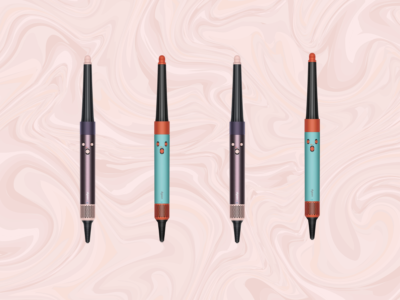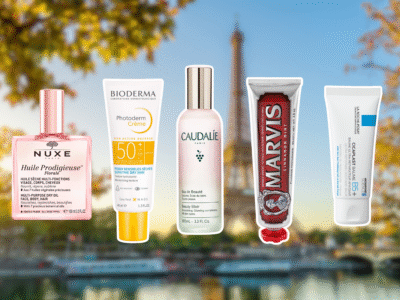Salmon sperm skincare is taking the world by storm, finding its way into creams, serums and even facial injections. Everyone from aestheticians to celebrities like Kim Kardashian are using it, so L360 editor Mattie Lacey-Davidson put it to the test.
In my nine years as a journalist, I’ve lost count of how many facials and aesthetic treatments I’ve tried. The only thing I haven’t tried is filler (but I’ll never say never).
Polynucleotides is a recent buzzword in the aesthetics industry, and a new injectable treatment made from fish sperm is said to work wonders for skin rejuvenation — spanning anti-ageing, pore size reduction, acne scars and hyperpigmentation. Naturally, I had to try it.
I tested a polynucleotide injection treatments under my eyes and across my cheeks and came away with very different opinions on the results for each area. Here’s everything you need to know about the treatments, along with my tried-and-tested reviews.
Read more: Experts reveal the truth about salmon sperm skincare
What are polynucleotide injections?
While polynucleotides are new to the world of skincare, they have been used in medicine for decades to promote wound healing and tissue repair, with plenty of evidence-based research behind them.
Derived from natural DNA molecules extracted from fish sperm (most commonly salmon or trout), the DNA used in the treatments mirrors our own. Dr Nicola Mulhaire from The Skin Studio at Blush + Blow London explains: “Highly purified fragments of this DNA are suspended in water to make an injectable gel.”
There are many different brands, which have each been formulated differently for different results. For example, Plinest is best for younger patients looking to prevent ageing or reduce acne scars, while Newest is best for renewing mature skin to improve hydration, radiance and wrinkles. Then there’s Ameela polynucleotides for the undereyes, which can both tighten and brighten the eye area with injections able to go extremely close to the water line.
Read more: This anti-wrinkle beauty trend could actually make your skin worse
What are the benefits of polynucleotide treatments aka salmon sperm injections?
“Polynucleotides are biostimulators,” Dr Nicola tells me. “So they induce bioregeneration within the skin by stimulating fibroblasts, which encourages cell turnover, improves elasticity, boosts collagen production and hydrates the skin, smoothing fine lines and wrinkles.”
This is one of the reason’s polynucleotide injections are soaring in popularity — rather than freezing or changing your face shape (as is the case with Botox or filler), they’re regenerative and simply improve, renew and reverse signs of skin ageing. As Dr Nicola says: “It’s the closest to natural you’ll get.”
Outside of the anti-ageing benefits, polynucleotides can also reduce hyperpigmentation and acne scarring, without the downtime associated with current treatment options like microneedling, chemical peels and lasers.
Often referred to as ‘salmon sperm injections’ or the ‘salmon sperm facial’ (even though it’s not a facial), polynucleotides can also be made from trout sperm.
Read more: What are exosomes and do you need them in your skincare routine?
Are polynucleotide injections good for the undereye and crow’s feet?
The skin around the eye is very thin, making it more sensitive than the rest of the face and often hard to treat. Filler is sometimes used to treat hollow undereyes and dark circles, but is notorious for leaving the eyes looking overfilled, unnatural and puffy. Other popular anti-ageing skin-tightening treatments like microneedling and chemical peels need to be kept away from the eye area, making undereye treatment options limited — until now.
Polynucleotides can be injected very close to the eye, reducing dark undereye circles, smoothing crow’s feet and fine lines, reducing hollowness or puffiness and hydrating the skin. Keep reading for my review of polynucleotides for the undereye.

Are polynucleotide injections good for forehead wrinkles?
Aside from surgery, Botox has dominated the anti-ageing treatments for eyes, brows and forehead (with brows lifts an extremely popular option). While polynucleotides can be injected into the forehead, in this instance they might not be the best approach.
Dr Jenny Evgenia of Skin Health clinic explains: “If you have very hyperactive forehead muscles with movement lines caused by repeated use and expression, these won’t be erased or relaxed in the same way that muscle-relaxing injections would achieve; however, there’s definitely a role for polynucleotides in this area.
“By improving the overall quality of our skin, there’s likely to be an improvement in skin tone and hydration and a reduction in fine lines. So, overall, they’re another tool to add to our regenerative armoury.”
Read more: Kim Kardashian’s dermatologist shares the secrets to her flawless skin
Who’s a good candidate for polynucleotides?
As polynucleotide injections can be used to both prevent and reverse signs of ageing, almost anyone is a good candidate as long as they’re over 25 — this is when collagen starts to decline. As with any aesthetic treatment, it’s always best to do your research and find a trustworthy practitioner or cosmetic doctor.
I recommend going for a consultation first or asking if they use different brands of polynucleotide treatment — that way you know they can choose the best one for you and not just offer you the only thing they have.
Read more: This clever Boots hack is saving women up to 53% on skincare — including hyaluronic acid
What do polynucleotide treatments involve and how many are needed?
Polynucleotides are quite an investment. Most people will need between two and four treatments, spaced two to four weeks apart — so, you’re looking at spending over £1,000.
Your practitioner will likely numb the area to be injected. This isn’t a mandatory step, but if you’re having an undereye treatment, it’s most likely as it can be very painful.
Unlike Botox or filler, where only a few injections are needed, lots of small polynucleotide injections need to be made across the skin — sometimes dozens in just one area.
Though there is a risk of bruising, the downtime tends to be minimal. But Dr Jenny adds: “For undereye polynucleotides, I’d warn about the potential of undereye puffiness for 48-72 hours, while for facial or neck polynucleotide treatments, you may have some very mild swelling and bumps for a day or two.”
What results can be expected from polynucleotides and how long to they last?
Results will start to show around four weeks after treatment. For most people, the final result will last around a year, but it’s recommended to have maintenance treatments every six months. It’s unlikely you’ll need as many treatments as you did the first time round — you’ll probably just need one or two.

Polynucleotides for the undereye reviewed
Some people have dark or hollow undereyes for most of their lives, due to genetics. However, in my case, this wasn’t a concern until my early 30s, when I started to notice crow’s feet setting in and skin laxity below the eye making them look puffy and often creased in photos.
I booked in for three undereye polynucleotide treatments at Therapie Clinic in Stratford — but at my second appointment was told I wouldn’t need a third (I very much appreciated the honesty).
As I said at the beginning, I’ve had countless aesthetic treatments over the years, and without a doubt, this was the most painful thing I’ve ever done (despite being numbed with cream first).
I’ve read about clinics in America and Australia using needle guns to make several injections in one go, but here in London, I had to endure dozens of tiny injections one after the other under each eye — and each one was painful.
This treatment is not for the faint hearted, as injections get extremely close to the eyeball and, at times, I wondered if they might actually go into it. The results, however, made it all worth it.
A couple of months later, the skin around my eyes was tight, firm and smooth — a huge difference from before. However, less than six months later, I’m seeing skin laxity return which is a little disappointing. I’ll likely need another two treatments at my six-month maintenance mark.
Polynucleotides for the cheeks reviewed
I saw Dr Nicola at The Skin Studio for three treatments across my cheeks. Despite the skin condition being pretty good (I’ve got my skincare routine nailed), there were signs of laxity and a hint of jowls setting in.
A little painful (but nowhere near as bad as the undereyes), Dr Nicola injected across my cheeks and concentrated around my smile line and jowls. Unlike the undereyes, the results were less noticeable, but there was definitely some improvement.
Having had Profhilo in the past (an injectable form of hyaluronic acid to boost hydration), I didn’t think the results of polynucleotide injections for the cheeks were as good as Profhilo, which I find hydrates and plumps my cheeks beautifully.
A couple of months later, I had Profhilo and, I must say, combining the two together gave absolutely fantastic results — but it’s quite the investment (polynucleotide injections tend to cost around £300 each while Profhilo is usually £350, and you’ll need two of each).
Would I get polynucleotides again?
Despite being so painful, I’d absolutely get polynucleotide injections for my undereyes again — in fact, I’ve already booked myself in for my six-month top-up. For the cheeks, however, I’m less convinced and will probably just continue with Profhilo until I feel like it’s not doing enough anymore (if that ever happens).













